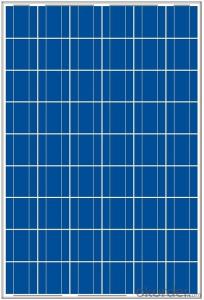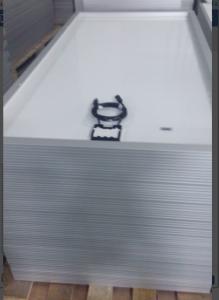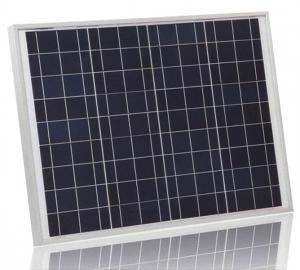CNBM Silicon Mono&Poly Series Solar Panels - Solar Panels Phoenix AZ
- Loading Port:
- Shanghai
- Payment Terms:
- TT OR LC
- Min Order Qty:
- 1 watt
- Supply Capability:
- 100000000 watt/month
OKorder Service Pledge
OKorder Financial Service
You Might Also Like

Specifications:
solar panels from 5W--300W, made of TAIWAN MOTECH brand cells,with CO in TAIWAN,Mono and Poly with VDE,IEC,CSA,UL,CE,ISO.
We import solar cells from Taiwan Motech brand, with this CO in taiwan and our CSA certification,we can still sell goods to Anti-dumping areas like USA. Our main products are solar panels, off grid and on grid solar home systems , solar street lighting systems, solar water heating system,solar pump,solar attic fan, solar DC LED lights and solar DC refrigerators.Bypass diodes may be incorporated or used externally, in case of partial module shading, to maximize the output of module sections still illuminated.
Some recent solar module designs include concentrators in which light is focused by lenses or mirrors onto an array of smaller cells. This enables the use of cells with a high cost per unit area (such as gallium arsenide) in a cost-effective way.
Certificates : ISO, CE, VDE IEC, MCS, CSA-UL, CEC.
Delivery time: sample 10days, order 25-30days.
Sample: charged.
Payment term: T/T 30% as deposit, 70% before shipment. Or irrevocable L/C at sight.
Trade term: FOB Shenzhen or CIF destination seaport or Airport.
Characteristics:
I.Solar Cell : High efficiency crystalline solar cell. Even if under the weak light, the solar module can produce maximum power output.
II.Tempered glass (toughened glass): Anti-reflecting coating and high transmission rate glass increase the power output and mechanical strength of solar module.
III.EVA and TPT: Using high quality EVA and TPT to prevent destroying and water.
IV.AI frame: Without screw, corner connection. 6 holes on the frame can be installed easily.
V.Junction box: Multi function junction box with water proof.
VI.Long lifetime: ≥25 years; Less power decrease.
VII.Good performance of preventing from atrocious weather such as wind and hails.
VIII.Resisting moisture and etching effectively, not effected by geology.
IX.The certificate issued by international authority: UL, TUV, IEC, VDE, CE.
Quality and Safety
1. Rigorous quality control meets the highest international standards.
2. High-transmissivity low-iron tempered glass, strong aluminium frame.
3. Using UV-resistant silicon.
4. IS09001/14001/CE/TUV/UL
Warranties
1. 10 years limited product warranty
2. 15 years at 90% of the minimal rated power output
3. 25 years at 80% of the minimal rated power output
Technical date :
ITEM NO.: | Poly 156*156 cell ,60pcs . Power range from 230Wp-260Wp | ||||||
Maximum Power(W) | 230 | 235 | 240 | 245 | 250 | 255 | 260 |
Optimum Power Voltage(Vmp) | 29.4 | 29.5 | 29.7 | 30.1 | 30.3 | 30.5 | 30.7 |
Optimum Operatige Current(Imp) | 7.83 | 7.97 | 8.08 | 8.14 | 8.25 | 8.37 | 8.48 |
Open Circuit Voltage(Voc) | 36.7 | 36.8 | 36.9 | 37.1 | 37.3 | 37.5 | 37.7 |
Short Circuit Current(Isc) | 8.52 | 8.59 | 8.62 | 8.65 | 8.69 | 8.73 | 8.78 |
Solar Cell: | 156*156 Poly | ||||||
Number of Cell(pcs) | 6*10 | ||||||
Name of Solar Cells | Polycrystalline Cell | ||||||
Size of Module(mm) | 1650*992*40/45/50 | ||||||
Cable & Connector Type | Pass the TUV Certificate | ||||||
Frame(Material Corners,etc.) | Aluminium-alloy | ||||||
Back sheet | TPT | ||||||
Weight Per Piece(KG) | 19.5KG | ||||||
FF (%) | 70-76% | ||||||
Junction Box Type | Pass the TUV Certificate | ||||||
Tolerance Wattage(e.g.+/-5%) | ±3%, or 0-3% | ||||||
Front Glass Thickness(mm) | 3.2 | ||||||
Temperature Coefficients of Isc(%) | +0.04 | ||||||
Temperature Coefficients of Voc(%) | -0.38 | ||||||
Temperature Coefficients of Pm(%) | -0.47 | ||||||
Temperature Coefficients of Im(%) | +0.04 | ||||||
Temperature Coefficients of Vm(%) | -0.38 | ||||||
Temperature Range | -40°C to +85°C | ||||||
Surface Maximum Load Capacity | 5400Pa | ||||||
Allowable Hail Load | 23m/s ,7.53g | ||||||
Bypass Diode Rating(A) | 12 | ||||||
Warranty | 90% of 10 years, 80% of 25 years. | ||||||
Standard Test Conditions | AM1.5 1000W/ 25 +/-2°C | ||||||
Packing | carton or pallet | ||||||
1*20' | 14 Pallets / 316pcs | ||||||
1*40'STD | 25 Pallets / 700pcs | ||||||
FAQ:
I..Will you focus on the safety of the goods during transportation?
Yes, Safety of the cargo is the primary element that we would consider on transportation.
II..How would guarantee the quality will meet the requirements of your clients?
Before shipment, we will have inspection for each batch of goods.
III..What certificates do you have?
IEC,UL,TUV,CSA,etc.
IV..Can you do OEM according to clients’ requirements?
Yes, we have our own brand while we can provide OEM service.


- Q: Can solar panels be installed on vehicles?
- Yes, solar panels can be installed on vehicles. They are commonly used on electric cars, boats, and recreational vehicles to harness solar energy and help charge their batteries.
- Q: What is the average payback period for solar panels?
- The average payback period for solar panels is typically around 7 to 10 years. However, this can vary depending on factors such as location, system size, local energy rates, and available incentives.
- Q: What is the biggest solar panel you can buy?How much energy can it produce in kwh?Thanks :)
- Depends upon the technology, but keep in mind that biggest may produce the most output per panel but smaller panels may have a higher efficiency factor and so produce more per sq meter. Solar Integrated Technologies:SI-G 864 - STC 864W Thin Film Roofing Membrane - PTC 779.8 Watts ENN Solar Energy: EST-480 - STC 480W Thin Film Tandem Junction Module - PTC 440.6 Watts SunPower:SPR-445J-WHT-D - STC 445W Monocrystalline Module - PTC 42.7 Watts Topsun: TS-M420JA - STC 420W Polycrystalline Module - PTC 376.3 Watts
- Q: Can solar panels be used for outdoor lighting?
- Yes, solar panels can be used for outdoor lighting. In fact, they are an efficient and eco-friendly option for providing illumination in outdoor spaces. Solar panels convert sunlight into electricity, which can be stored in batteries and used to power outdoor lights during the night. This eliminates the need for connecting to the electrical grid and reduces energy costs. Additionally, solar-powered outdoor lighting systems are easy to install and maintain, making them a popular choice for various outdoor applications.
- Q: Can solar panels be used in areas with high levels of saltwater?
- Yes, solar panels can be used in areas with high levels of saltwater. However, it is important to choose solar panels that are specifically designed for such conditions and have corrosion-resistant materials. Additionally, regular maintenance and cleaning of the panels may be required to prevent damage from salt build-up.
- Q: When people buy small solar panels, what are the steps to making it actually charge or run something.. I'm completely new to this of course and im curious. what kinda of wire and other devices are needed and how do you attach the wire and everything..
- DIY okorder
- Q: im trying to run my house with with solar panels, is it possible? if so please let me know how....i have a 6000 w inverter
- I ve been researching this myself! I need appr 6000w per year. I live in MN which a zone 5 on a solar map (4.4 hrs of sunlight per day). I would need 56 panels at 300w each!!! pffft - I d be dead before I recouped my cost, plus my roof isn t even that big! Sure, I can reduce my bill, but then again the $ to reduce it..... I m now looking into wind turbine since it always seems windy here.
- Q: Do solar panels require a battery for energy storage?
- No, solar panels do not require a battery for energy storage. However, if you want to store the excess energy generated by the panels for use during non-sunny periods or at night, a battery storage system can be installed.
- Q: Can solar panels be installed on the ground instead of a roof?
- Yes, solar panels can be installed on the ground instead of a roof. Ground-mounted solar panels are a popular option for those who do not have suitable roof space or prefer not to install them on their roofs. Ground installations offer flexibility in terms of panel orientation and can potentially generate more electricity due to optimal sun exposure.
- Q: does anybudy know about solar panels? plz reply me
- Solar panel refers to a panel designed to absorb the sun's rays as a source of energy for generating electricity or heating.A photovoltaic (in short PV) module is a packaged, connected assembly of typically 6×0 solar cells. Solar Photovoltaic panels constitute the solar array of a photovoltaic system that generates and supplies solar electricity in commercial and residential applications.
Send your message to us
CNBM Silicon Mono&Poly Series Solar Panels - Solar Panels Phoenix AZ
- Loading Port:
- Shanghai
- Payment Terms:
- TT OR LC
- Min Order Qty:
- 1 watt
- Supply Capability:
- 100000000 watt/month
OKorder Service Pledge
OKorder Financial Service
Similar products
Hot products
Hot Searches
Related keywords




























